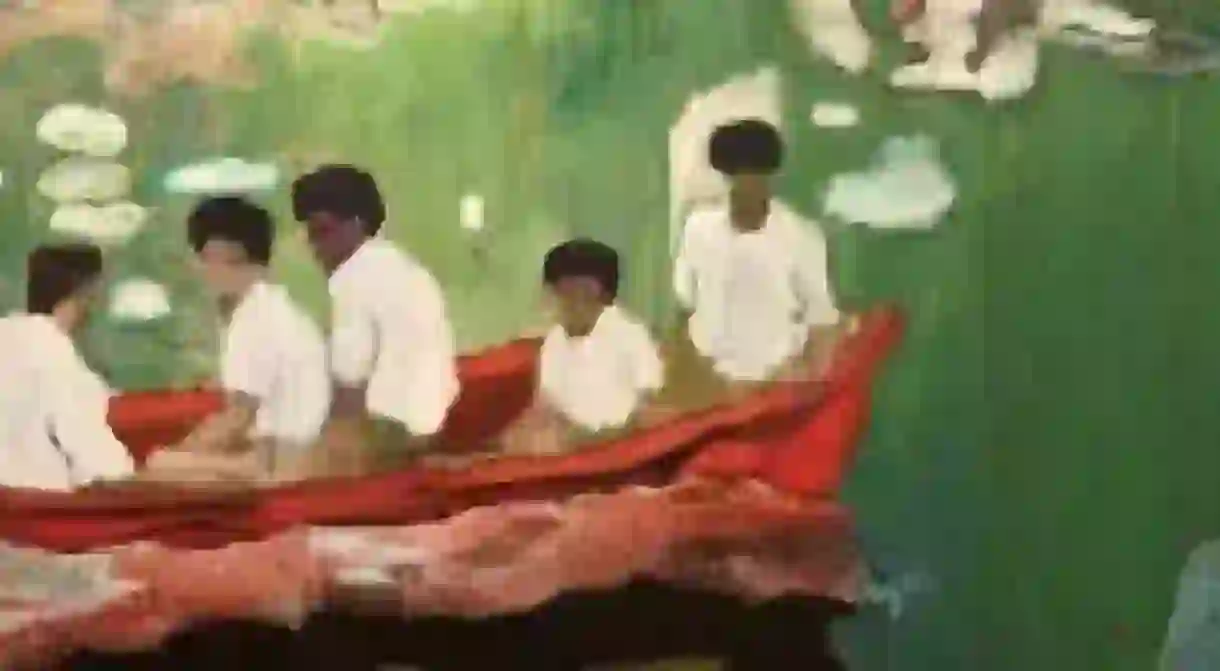Crossing the Pond: The Rise of 5 Contemporary Scottish Artists in NY

Over the last decade, New York has been nurturing a fascination with Scottish-bred artistic talent. This leads to some of the most innovative exhibitions and installations to cross the pond. Here is a list of five top Scottish names that you need to know on the New York art scene.

Andy Goldsworthy
Born in 1956, Andy Goldsworthy moved from West Yorkshire to the rolling hills of the Scottish borders in Dumfriesshire. The influence of this rugged landscape is omnipresent in his work; nature is both his muse and material. He manipulates objects such as brightly colored flowers, icicles, pinecones, snow, twigs, and thorns, keen on also portraying the frailty of a petal or the imperfection of a stone. Goldsworthy photographs his art immediately after he creates it, though he believes that each piece should ‘grow, stay and decay’ after he is finished. In this way, each of his public works becomes part of its surroundings. In 2003, he opened his first permanent collection at the Museum of Jewish Heritage in New York city. Here, he created an exhibit of trees growing from stone, of which the museum has been tracking changes and growth via photograph.

Karla Black
A graduate of the Glasgow School of Art, Karla Black burst into the New York art scene with a solo exhibition, titled ‘How Not to Know’ in 2014 at David Zwirner Gallery. In this exhibition, a childlike fascination of exploring materials is shown in her creative use of items, such as scotch tape suspending particles of soap and broken bath bombs placed in between fragile lines of powder pink chalk dust. The delicacy and indefinite nature of Black’s designs have the Institution of Contemporary Art at the University of Pennsylvania referring to it as “on the brink of collapse.” The significance of her work is in the boldness it conveys despite its fragility. The use of everyday materials such as eye shadow and toothpaste encourages her audience to take a moment to consider the candid world that surrounds them.

Douglas Gordon
In Douglas Gordon’s world, things are neither black nor white, good or evil. There is a constant duality that permeates his videos, installations and photographs. In his latest work “Tears Become… Streams Become…” at the Park Avenue Armory, Gordon transformed the performance space into a 33,000 square foot lake over the span of an hour. The controlled flood turned the room into a boundless, liquid-filled space, paired with a performance of water-inspired piano pieces by Hélène Grimaud. Gordon encourages his audience to contemplate the New York they sometimes overlook, by being surrounded above and below with the Armory’s iconic architecture. Inspired by the tears of a young piano player, the piece embodies a melancholy beauty, marrying architecture, music, and emotion.

Ruth Ewan
Ruth Ewan, as one of the newer members to the Scottish contemporary art scene, has made a name for herself through her history-inspired exhibitions. To Ewan, history is more than the past; it is a tool than can be used to examine and shape the future. Her ongoing work, ‘A Jukebox of People Trying to Change the World,’ features over 2,000 songs with topics ranging from political protest to commemoration. The CD collection is ongoing, and has featured in exhibitions in London, Bordeaux, and at the New Museum in New York as part of the ‘Younger Than Jesus’ exhibition. Ewan is part of an emerging artistic generation that uses different types of media in its installations. Their projects are interactive, drawing the audience into the artist’s world on a more intimate level.

Peter Doig
Peter Doig is a renowned figurative painter, famed for the ‘magical realism’ that echoes through his landscapes. Standing apart from the idea of aesthetic-based art that has consumed many of his contemporaries, Doig’s work is self-contained, each brushstroke expressing the activity and the story he wishes to tell. The scenic paintings depict the artist’s earlier memories with renewed poignancy, featuring surreal bright colors and soft lines. His recent exhibition at Michael Werner showcased some of his earlier work from the 1980s. These early works are an homage to Werner’s experimentation as an artist, with jarring palettes, pop culture, and cinematic imaginary.













